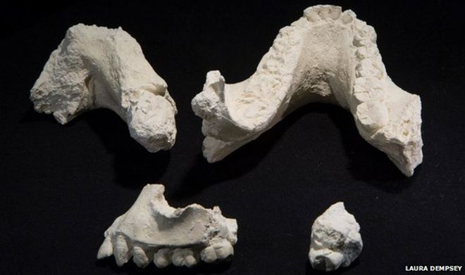It means this new hominin was alive at the same time as several other early human species, suggesting our family tree is more complicated than was thought.
The study is published in the journal Nature.
The new species has been called Australopithecus deyiremeda, which means "close relative" in the language spoken by the Afar people.
Some researchers dispute whether the various partial remains really constitute different species, particularly for A. bahrelghazali. But Dr Haile-Selassie said the early stage of human evolution was probably surprisingly complex.
"Historically, because we didn`t have the fossil evidence to show there was hominin diversity during the middle Pliocene, we thought there was only one lineage, one primitive ancestor - in this case Australopithecus afarensis, Lucy - giving rise to the next.
"That hypothesis of linear evolution has to be revisited. And now with the discovery of more species, like this new one... you have another species roaming around.
"What this means is we have many species that could give rise to later hominins, including our own genus Homo."
Dr Haile-Selassie said that even more fossils need to be unearthed, to better understand the path that human evolution took.
He added that finding additional ancient remains could also help researchers examine how the different species lived side-by-side - whether they mixed or avoided each other, and how they shared food and other resources in their landscape.
More about:
















































